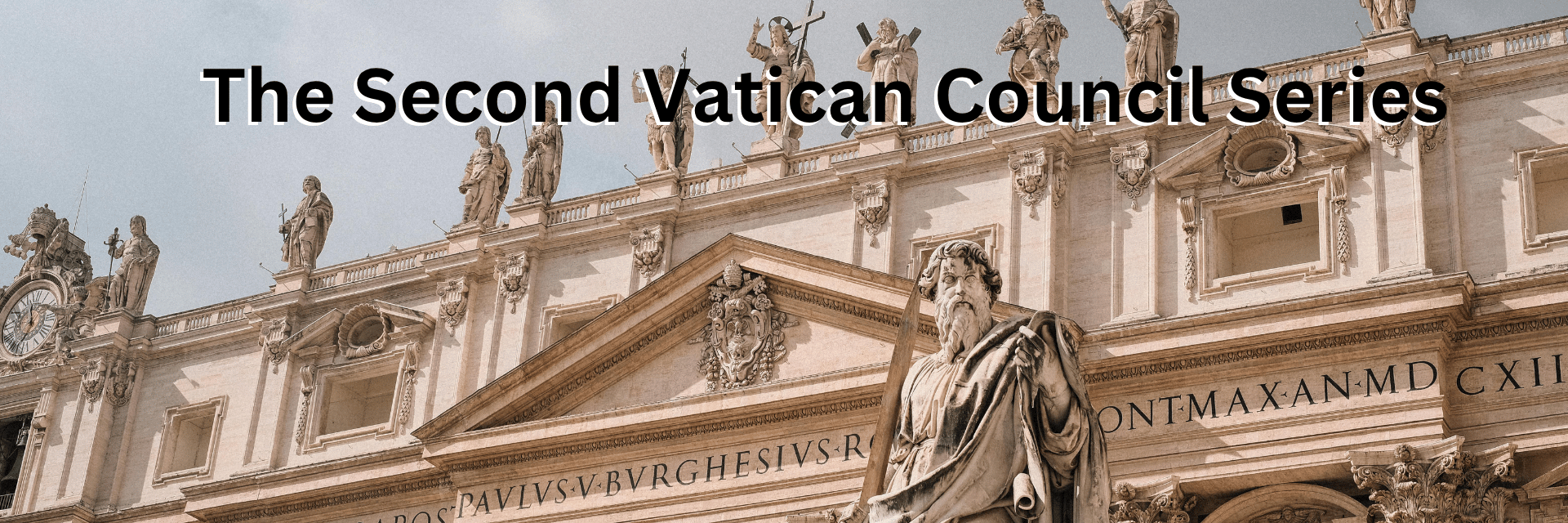1st Letter on Vatican II

- ADDRESSING CONCERNS ON THE MASS AND VATICAN II
Introduction
My dear brother and sisters in Christ,
As you are aware, just a short distance away, in Veneta, we have St. Thomas Becket church which is part of the Society of St. Pius X. The SSPX have had a considerable influence in our vicariate. They are dedicated to preserving certain aspects of the Tradition of the Church, most especially the celebration of the Traditional Latin Mass (the missal of 1962). They have helped our community to better appreciate a reverent liturgy. However, along with this comes confusion and distrust about the 2nd Vatican Council and the Novus Ordo Mass (the missal of 1969). So, I have felt an urging to address some of these topics with some teaching within this letter.
Let us begin by defining our terms. I am going to use the word “Traditionalist” to refer to a kind of ideology that rejects the validity of the 2nd Vatican Council or the Novus Ordo Mass. This is distinct from the term “Traditional” because every faithful Catholic should be rooted in the Tradition of the Catholic Church.
This letter will be the first of several to come to address some of those concerns. We will start then by talking about the Second Vatican Council.
The 2nd Vatican Council: a “Pastoral Council”?
This council was convened by Pope John XXIII and concluded under Pope Paul VI; The Second Vatican Council (Vatican II) is often a subject of debate, particularly among Traditionalists. One common argument is that Vatican II was merely a “pastoral council” and thus lacks doctrinal authority. Addressing this requires understanding the nature of ecumenical councils, the intentions behind Vatican II, and the teachings promulgated by it.
Understanding Ecumenical Councils
1. Definition and Authority of Ecumenical Councils:
- An ecumenical council is a gathering of bishops from the entire Church, convened to discuss and settle matters of doctrine and practice.
- The decisions of an ecumenical council, when ratified by the pope, hold significant authority within the Church.
- Historically, councils have addressed both doctrinal and pastoral issues, often blending the two.
- There are only three types of councils or synods: “National councils,” “Provincial councils,” or “General (ecumenical) councils,” but there is no designation as a “pastoral council.” The Second Vatican council was an ecumenical council.
2. Historical Precedents:
- Previous councils, such as the Council of Trent and the First Vatican Council, addressed specific doctrinal controversies (e.g., Protestant Reformation, papal infallibility).
- These councils also included pastoral elements to guide the faithful in applying these doctrines in their lives.
Vatican II: Pastoral and Doctrinal Aspects
1. Pastoral Intentions:
- Pope John XXIII called Vatican II to address the pastoral needs of the modern world, seeking to engage with contemporary issues and to renew the Church’s approach to evangelization.
- The pope used the term “pastoral” to emphasizes the council’s intent to provide guidance for living out the faith in the modern context, but it was not used with the idea that he was creating some kind of new council designation.
2. Doctrinal Content:
- Although Vatican II was pastoral in its approach, it also contains significant doctrinal teachings.
- Documents such as Lumen Gentium (Dogmatic Constitution on the Church), Dei Verbum (Dogmatic Constitution on Divine Revelation), and Sacrosanctum Concilium (Constitution on the Sacred Liturgy) articulate essential doctrines of the faith.
- The council affirmed and clarified teachings on the nature of the Church, the role of the laity, the universal call to Holiness, the importance of Scripture and Tradition as a single deposit of faith, and liturgy.
3. Authority of Vatican II:
- The documents of Vatican II were ratified by the pope, giving them magisterial authority.
- The council’s teachings, while presented in a pastoral manner, are binding and must be accepted by the faithful.
Addressing Traditionalist Concerns
1. Misunderstandings about “Pastoral”:
- The term “pastoral” used by the Pope does not mean “non-doctrinal” or “optional.” It refers to the way teachings are applied to the lives of the faithful. Its approach was to focus more on exhortations and evangelization rather than on condemnation and anathemas.
- Pastoral concerns stem from and are deeply rooted in doctrinal truths.
2. Continuity with Tradition:
- Vatican II must be understood in continuity with the Church’s tradition.
- The council did not break with the past but sought to express the timeless truths of the faith in a way that is understandable to people today.
3. Role of the Magisterium:
- The Church’s magisterium (teaching authority) continues to interpret and apply the teachings of Vatican II.
- Successive popes, including John Paul II, Benedict XVI, and Francis, have reiterated the council’s importance and authority.
Conclusion
Vatican II was both pastoral and doctrinal, aiming to address the needs of the modern world while reaffirming the timeless truths of the Catholic faith. Its teachings are authoritative and must be understood in continuity with the Church’s tradition. It is important for us to recognize that the Church did indeed exercise her proper authority to call the Second Vatican Council, and she exercised her proper authority in ratifying its documents.





